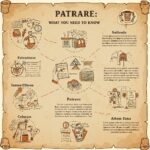Discover everything about the 1977 Stolp Starduster Too SA-300, a remarkable homebuilt biplane. From its exceptional performance to maintenance tips, explore why the 1977 Stolp Starduster Too SA-300 remains a beloved aircraft.
Introduction to the Stolp Starduster Too SA-300
The Stolp Starduster Too SA-300 represents one of the most iconic homebuilt biplanes ever created. Developed by Lou Stolp, this two-seat sport biplane emerged as a larger, more capable successor to the original Starduster. The aircraft’s distinctive design combines classic biplane aesthetics with practical functionality, making it a favorite among aviation enthusiasts and homebuilders alike.
The aircraft’s development focused on creating an economical yet robust platform capable of basic aerobatics while maintaining excellent cross-country capabilities. Built around a sturdy 4130 steel tubing fuselage with fabric covering, the Starduster Too demonstrates remarkable durability and longevity, with several examples accumulating over 2,500 flight hours.
The 1977 model year marked a period of growing popularity for the Starduster Too, as builders increasingly recognized its potential as both a recreational aircraft and a practical transportation platform. Its ability to accommodate two people comfortably, along with modest baggage capacity, made it an attractive option for pilots seeking both adventure and utility.
Design and Engineering Excellence
At the heart of the Starduster Too’s design lies a carefully engineered structure that balances strength with weight efficiency. The aircraft features spruce wood spars and plywood wing ribs, creating a robust yet lightweight wing structure. The fuselage’s 4130 steel tubing construction provides excellent durability while maintaining relatively straightforward building requirements.
The aircraft’s design incorporates a +6/-6 G load rating, making it capable of performing basic aerobatics while maintaining a comfortable safety margin. While not intended for competitive aerobatic use, this structural strength ensures peace of mind during normal operations and allows for occasional sporty flying when desired.
Power options for the Starduster Too demonstrate remarkable flexibility, with the most common choice being the Lycoming O-360 180 hp engine. However, builders have successfully installed various powerplants, ranging from the Continental series to even the Pratt & Whitney R-985, showcasing the design’s adaptability to different power configurations.
Performance Specifications and Capabilities
The Starduster Too delivers impressive performance figures that make it suitable for various flying missions. With a maximum speed of 180 mph and a cruise speed of 134 mph, the aircraft offers efficient cross-country capability while maintaining the open-cockpit excitement that biplane enthusiasts crave.
Low-speed handling characteristics remain predictable, with a stall speed of 56 mph and a service ceiling of 23,000 feet. The aircraft’s rate of climb at 1,500 feet per minute provides quick access to altitude, while its roll rate of 120 degrees per second offers responsive yet manageable handling.
Fuel capacity varies depending on configuration, but typical arrangements allow for reasonable range and endurance. The aircraft’s empty weight of approximately 1,000 pounds and a gross weight of 1,704 pounds provide a useful load that accommodates two adults plus fuel and modest baggage.
Building and Maintenance Guide
- Construction requires careful attention to detail, particularly in the fabric covering process and control system installation.
- The airframe demands regular inspection of the steel tubing structure and fabric covering integrity.
- Builders should focus on proper alignment of the wings and careful rigging of control surfaces.
- Engine installation varies based on powerplant choice, requiring custom mounting solutions in some cases.
- Regular maintenance includes fabric inspection, control cable tension checks, and standard engine servicing.
- Special attention should be paid to the landing gear attachment points and bungee cord condition.
Flying Experience and Handling Characteristics
The Starduster Too offers a unique flying experience that combines classic biplane character with practical utility. Control forces remain well-harmonized throughout the flight envelope, though the ailerons typically require more effort than modern aircraft designs. This characteristic contributes to the aircraft’s stability in cruise flight while maintaining sufficient responsiveness for enjoyable handling.
In the pattern, the aircraft demonstrates predictable behavior, with approach speeds typically maintained around 90 mph transitioning to touchdown speeds of approximately 55 mph. The biplane configuration provides excellent forward visibility during the approach, though proper energy management becomes crucial due to the inherent drag of the design.
Cross-country flying reveals the Starduster Too’s practical side, with comfortable cruise speeds and reasonable fuel efficiency. The open cockpit environment adds to the adventure, though some builders opt for partial or full canopy installations to enhance comfort during longer flights. The aircraft’s stability and predictable handling characteristics make it an excellent platform for both local pleasure flights and extended journeys.
Frequently Asked Questions About 1977 Stolp Starduster Too SA-300
The 1977 Stolp Starduster Too SA-300 generates numerous questions from aviation enthusiasts and potential builders. One common inquiry concerns the aircraft’s construction timeline and complexity. Building a Starduster Too typically requires 2,000-3,000 hours of work, depending on builder experience and desired customization level. The construction process demands attention to detail, particularly in areas like wing alignment and control surface rigging.
Another frequent question addresses the powerplant options for the 1977 Stolp Starduster Too SA-300. While the Lycoming O-360 180 hp engine remains the most popular choice, the airframe successfully accommodates various engines, including Continental series, Ford V-8 and V-6 conversions, and even the larger Pratt & Whitney R-985. Each engine choice affects performance characteristics and requires appropriate modifications to engine mounts and systems.
Maintenance requirements represent another common concern for Starduster Too owners. Regular maintenance includes fabric inspection every 100 hours, control cable tension checks, and standard engine servicing. The conventional landing gear system requires periodic inspection of bungee cords and attachment points, while the steel tube structure demands regular corrosion inspection and prevention measures.
Legacy and Community Impact of 1977 Stolp Starduster Too SA-300
The 1977 Stolp Starduster Too SA-300 has left an indelible mark on the homebuilt aircraft community. Its influence extends beyond mere numbers, as the design established new standards for homebuilt biplane construction and performance. The aircraft’s success inspired numerous builders to pursue their aviation dreams, creating a tight-knit community of Starduster enthusiasts who continue to share knowledge and experiences.
The Starduster Too’s legacy is evident in its enduring popularity among builders and pilots. Many examples have accumulated impressive flight hours, with several aircraft logging over 2,500 hours and at least one surpassing 5,000 hours of operation. This remarkable longevity testifies to the design’s durability and continued relevance in modern sport aviation.
The aircraft’s impact extends to subsequent designs, including the Stolp Acroduster series, which built upon the Starduster Too’s foundation. These derivatives, scaled down 10 percent and stressed for higher G loads, demonstrate how the original design principles evolved to meet different flying requirements while maintaining the characteristic Starduster family traits.














